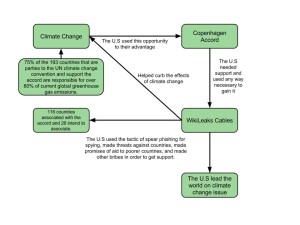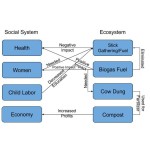Explain an area of biodiversity hotspot location, using the Conservation International Hotspots Globe Conservation International map located in the Module 10. Summarize in 150-200 words the location, species, geography, threats, and anything else you feel is important about the area. Explain what H.I.P.P.O. stands for and describe each threat. Lastly, describe a threat your hometown can or is facing and connect the threat to the hotspot location you described.
I chose to write about the Mesoamerican forest hotspot. It is third largest hotspot in the world according to the CEPF. It is located in Central America and includes all of the subtropical and tropical ecosystems of Guatemala, Belize, El Salvador, Honduras, Nicaragua, Costa Rica, about a third of Mexico, and two-thirds of Panama Mesoamerica has about 17,000 species of vascular plants and nearly 3,000 are endemic. There are about 1,120 bird species and more than 200 species restricted to the region. The mammals in Mesoamerica has about 440 species and more than 65 of these are endemic. Reptiles in Mesoamerica have about 690 species and nearly 240 are endemic. Some of the endemic species are the quetzal, howler monkey, and about 17,000 plant species. Mesoamerica has one of the highest deforestation rates in the world. Between 1980 and 1990, deforestation averaged 1.4 percent annually. It is also estimated that 80 percent of the area’s original habitat has been cleared or severely modified. El Salvador has less than five percent of its original forest left.
H.I.P.P.O. stands for habitat loss, invasive species, pollution, human population, and overharvesting. Habitat loss is when an area is converted from usable to unusable habitat. Examples of habitat loss can include: industrial activities, agriculture, mining, deforestation, and water extraction. The invasive species threat is when an animal, plant, or microbe moves into a new area. This can have an affect the resident species such as new species can parasitize the residents, compete with them for food, bring diseases, or modify habitats. Pollution is when the discharge of toxic synthetic chemicals and heavy metals into the environment. This has an impact on species and can lead to extinctions. The human population is about 6.8 billion and the increase in the population leads to an increase threat to biodiversity. Overharvesting can be the targeted hunting, gathering, or fishing for a particular species and the harvesting by-catch in ocean fisheries that causes biodiversity loss.
My hometown of Archbald in northeast Pennsylvania, can face the threats of habitat loss and human population. I have seen much greater habitat loss in my area in the past few years. There has been deforestation in a few areas for the timber and for development. Also, construction has begun on two power plants in my area that has left the surrounding area unusable. The human population has also been increasing in this area. There have been many new living places built and being built and an increase of cars and traffic that has led to more pollution. The threats my hometown faces are related to the Mesoamerican forest hotspot threats. The threat both locations face is deforestation and affects both areas similar. The animals in the areas affected have to find somewhere else to go, and in my area, they usually end up in someone’s backyard. This deforestation might make the human lives better, but overall it has a great impact on the areas biodiversity.




